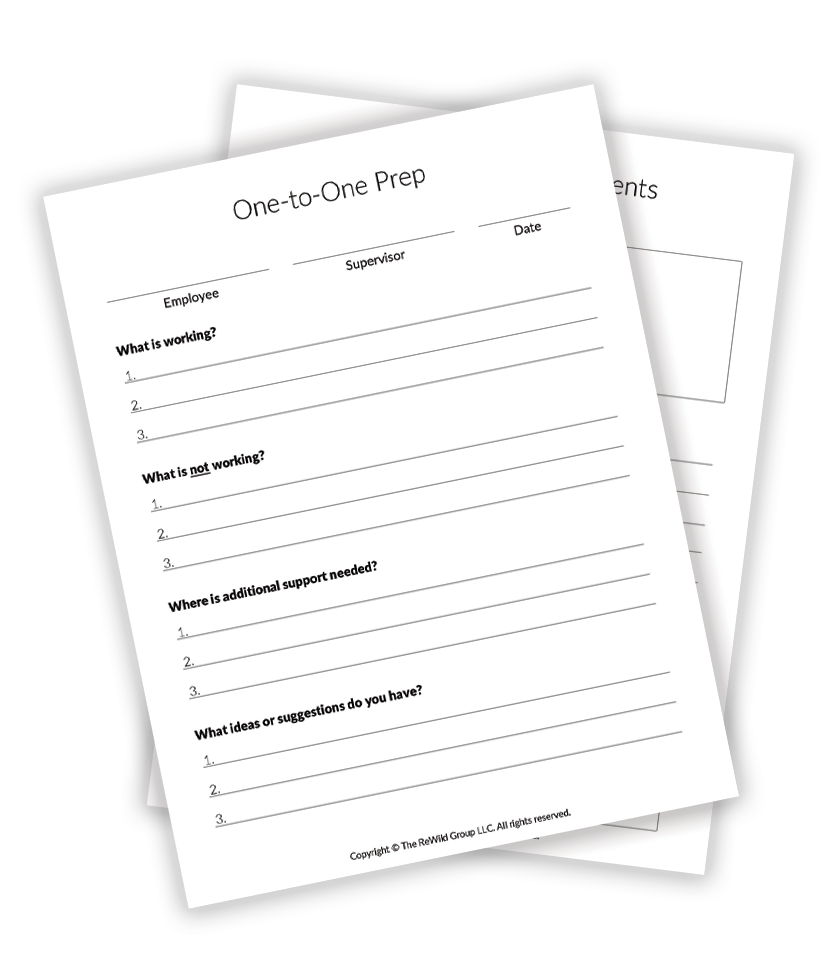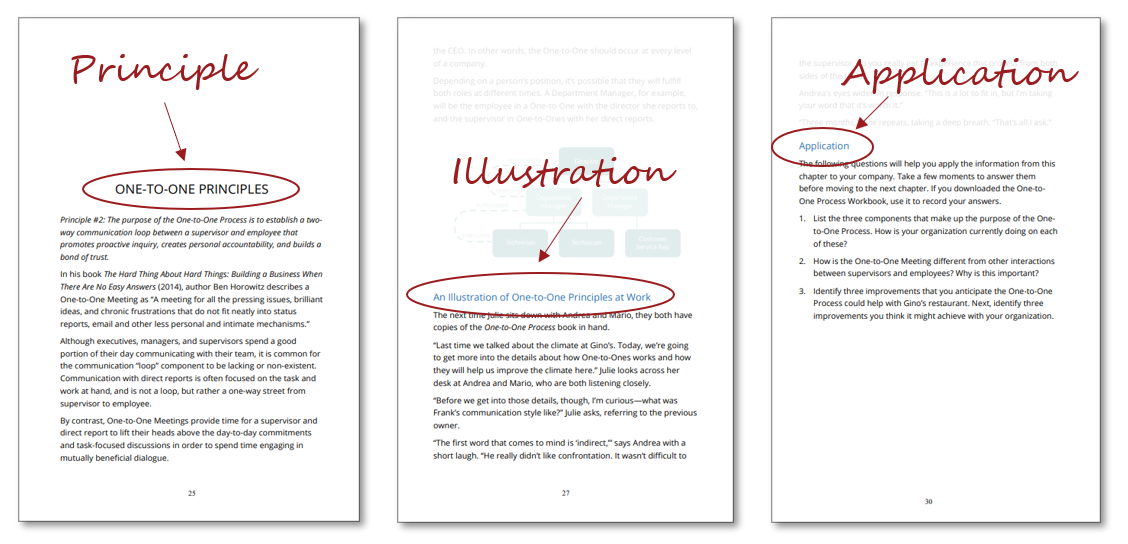The One-to-One Process is a simple yet powerful tool that drives positive change in a business. Every business depends on its people to deliver the goods and services it provides. What happens when those people aren’t communicating well with one another? The business suffers. This book discusses the importance of one-on-one meetings, explains how to structure them, provides a helpful template, and reveals the best questions to ask. Get practical tips and hands-on guidance to effective one-on-one meetings.
Free Workbook Included!
The One-to-One Workbook is a free tool that will help you get the most out of the One-to-One Process book. A link to download the workbook can be found inside the book. The workbook includes space to take notes as well as room to record your responses to the application questions found at the end of each chapter.
One-to-One Template
This simple, useful template in PDF is also included with purchase of the book. The One-to-One Form includes questions for both the supervisor and employee to use, as well as room to record follow-up commitments. The meeting template is the perfect starting point for driving more effective One-on-One Meetings at work.
Take a Look Inside
Each chapter addresses a topic related to the one-to-one process of preparing, meeting, and following up on commitments. The chapter begins with an explanation of the principle that is involved and follows with an illustration of what it looks like when the principle is applied to a business. At the end of each chapter there is an application section with questions that will help you apply the principle to your business.
“Matthew writes in an easily relatable style using examples that any business leader can envision in their own business.
I highly recommend this book and others in the series.”
What is the One-to-One Process and who is it for?
The One-to-One Process establishes a communication loop between supervisors and employees and is one of the most effective ways to influence the climate at an organization. By meeting individually and on a regular basis with each employee, supervisors hear directly from their direct reports about concerns and ideas for improvement and can help develop them in their positions. Staff can provide feedback to their managers and ask for support or offer suggestions. Both parties benefit from the structured process and the company benefits from the greater trust and open communication fostered by One-to-One Meetings.
Companies that do not have a One-to-One Process in place often experience the following symptoms:
A culture that is resistant to change
Underdeveloped staff
Difficulty diagnosing and solving problems
High employee turnover
A culture that is resistant to change – When communication is closed and employees are not regularly speaking with their bosses (and vice versa), there is room for misinterpretation. This can affect the climate of the company on a large scale, but it can also affect smaller, day-to-day concerns. It’s not uncommon for a culture to develop in the midst of this type of climate that is resistant to change—especially when it is imposed from the top down. The One-to-One Process is an effective way to open up channels of communication, wherein concerns and questions can be addressed on a more granular level, freeing up the employee to ask candid questions about organizational change, allowing for misinterpretations and concerns to be addressed.
Underdeveloped staff – When managers meet with their employees on a regular basis, they are made aware of the challenges, struggles, strengths, and triumphs that the employee experiences. This presents a unique opportunity for the manager to help aid the employee’s success by removing obstacles when appropriate or by helping to further develop the employee's skills. The net result of these efforts is an employee who is getting more benefit out of their job (thus making them more loyal) and a stronger business that benefits from the improved skills.
Difficulty diagnosing and solving problems – Within every organization there are multiple factors that contribute to its success or decline. Getting to the root of those factors is the difficulty, as any CEO or business leader will tell you. The One-to-One Process provides a clear channel of communication for issues to surface early, before they become unmanageable. What’s more, the One-to-One is also a place for solutions to present themselves. Managers and employees alike are encouraged to find creative solutions to the problems that they witness or experience.
High employee turnover – The expense of losing a trained employee is difficult for a business to absorb. When communication is lacking, however, management is often unsure what the reason is for the departure. The One-to-One Process provides a structured way for supervisors to get regular insight into what is working well from the employee’s perspective and what is not working well. These opportunities for joint problem solving and employee development are critical to the retention of good team members.
In this book, you will learn the principles of the One-to-One Process and see how they apply to a fictional company. Each chapter closes with questions to help you learn and apply these ideas to your business.
Get the One-to-One Process Guidebook today!
Explore the entire Elements Book Series!
One-to-One Process is just one book in our series called Organizational ReWilding: 11 Elements of an Exceptional Business. Each book addresses a fundamental element of what comprises a great company.
The books are divided into four categories: Leadership, Infrastructure, Strategy, and Culture. Each one follows the same format as One-to-One Process, with chapters structured to explain a principle, illustrate what it looks like in practice using a fictional company, and closing with application questions designed to help you apply the principle to your own business. Click below to learn more.







